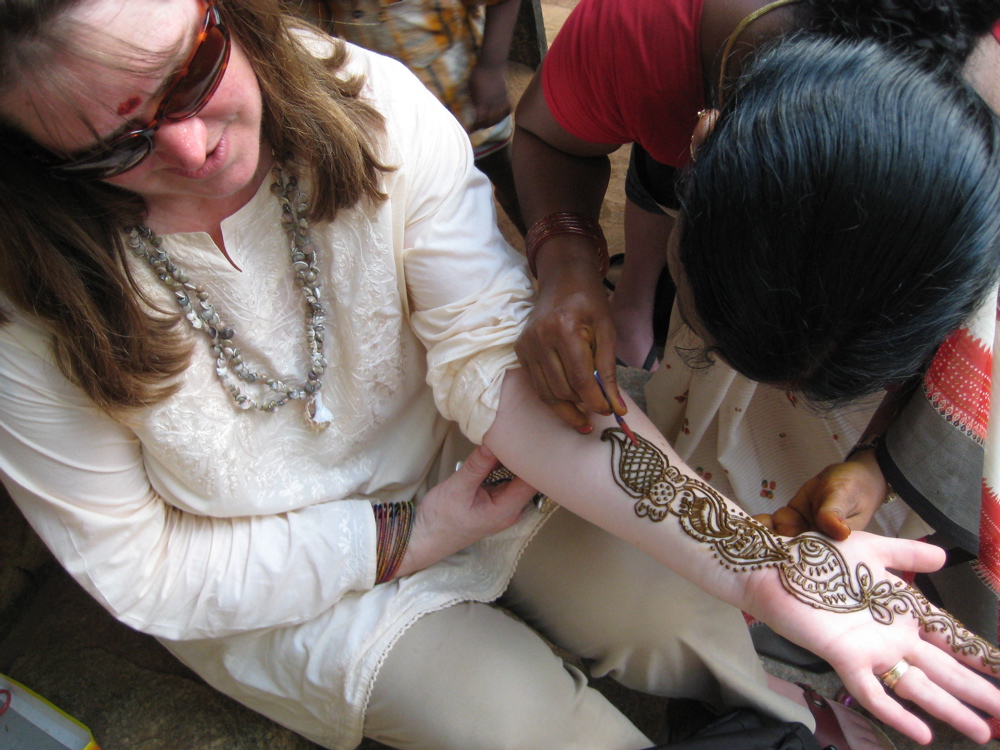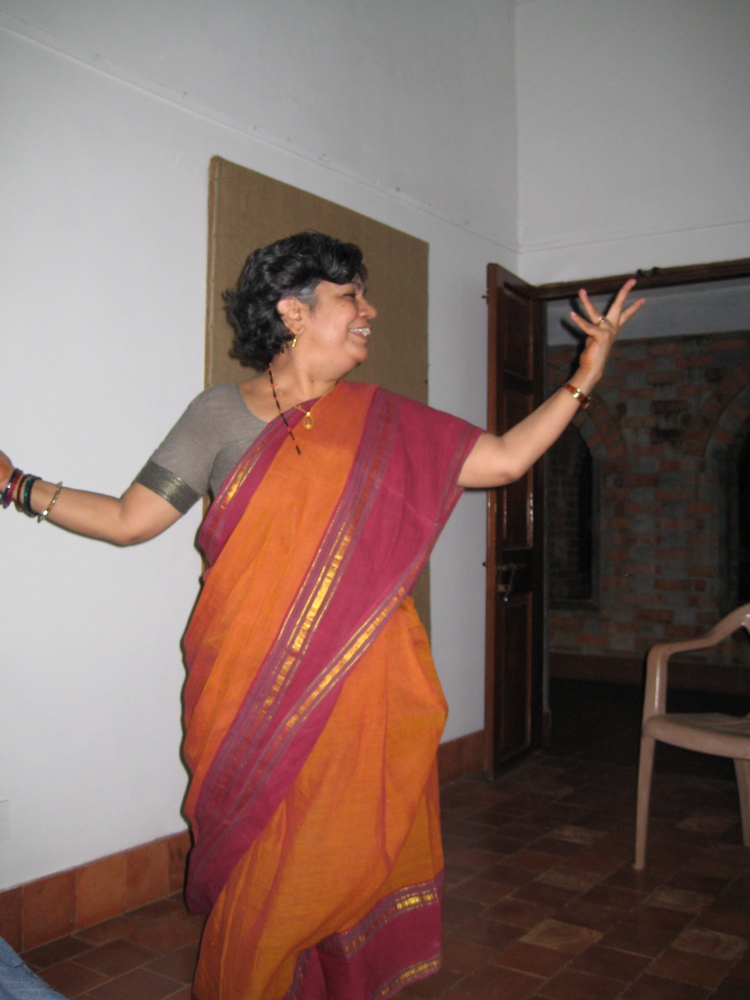Arts in Chennai, Part II
sfindley May 26th, 2008
On the outskirts of Chennai in the state of Tamil Nadu we met up with Sashi Ananth, a local architect with a degree from Madras University, who treated us to a day of touring ancient architecture, beginning in Mahabalipuram.
Our lesson began with a description of the ways in which temples originated as a representation of the divine and a location for individual experiences in prayer. As we were reminded in an earlier lecture, Hinduism is not a communal religion, and the temples merely provide a sanctum in which the macrocosm or paramathma, meaning Brahman, is in dialogue with the microcosm or jeevathma, meaning individual. In the 5th and 6th centuries, temples, such as The Shore Temple we witnessed began to represent a complex or precinct reminiscent of a Buddhist shrine. Most face toward the east, and this particular temple housed Shiva on one end and Vishnu on the other.
Vishnu, we discovered, is lying in tranquility, while Shiva is represented by a column of light. Sashi explained that this column extended from the top of the head to the base of the body and signified the act of creation–husband, wife and child–as the masculine and feminine integrate and reflect the aspiration to become Brahman, who is formless and genderless and divine. Unfortunately, westerners have interpreted the column as phallic and, therefore, too explicit in nature.
From here we traveled to the 5 Rathas, or chariots: a series of sculptures carved into the existing rocks, demonstrating various types of architecture.
Our final destination was to meet V. Vedanthan, a local sculptor. We toured his facility where we witnessed the various artists at work on their marble creations. Of course, we spent the conclusion of our time shopping in his store, sorting through the many marble and iron statues, bowls, and various pieces of craftsmanship, most far too large to bring back to the states (and believe me if we could we would!).






